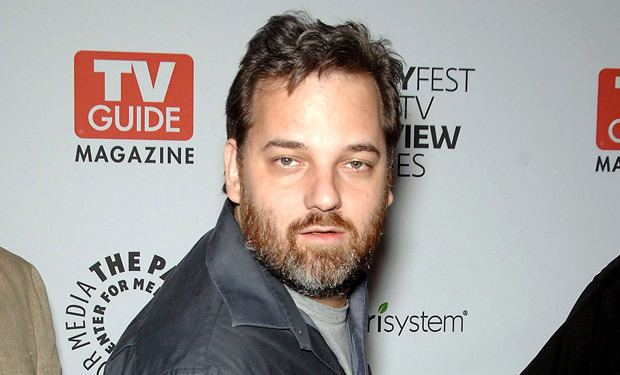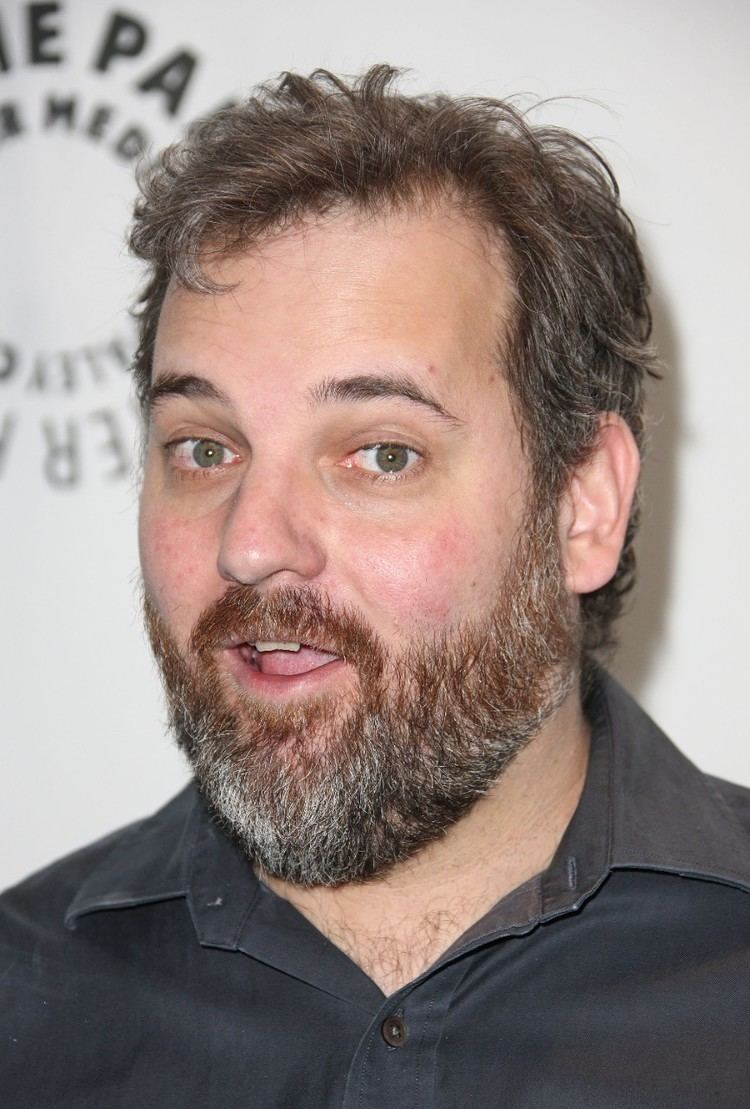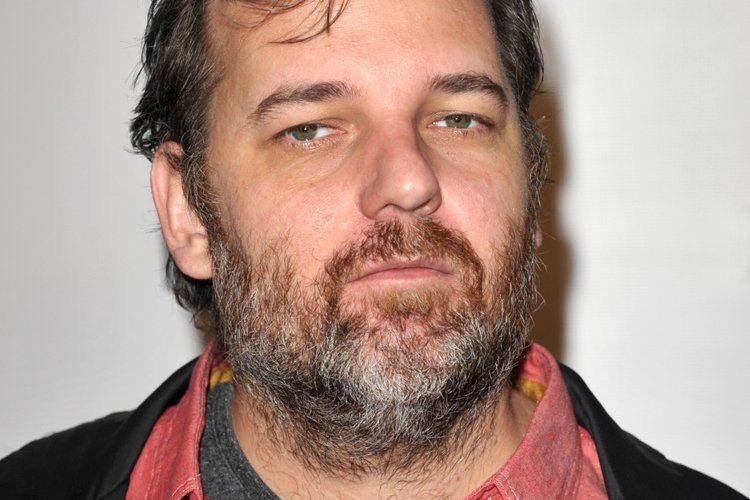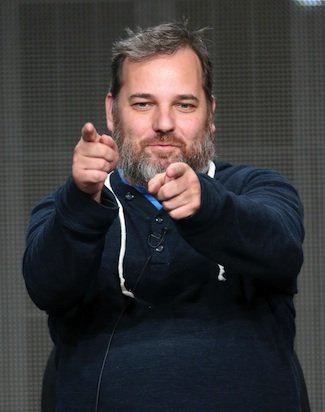Name Dan Harmon Role Writer | ||
 | ||
Occupation Writer, producer, performer Known for Community, Rick and Morty, Harmontown, Channel 101, Monster House, Heat Vision and Jack, Acceptable.TV Books You'll Be Perfect When You're Dead: The Collected Online Writings of Dan Harmon Movies and TV shows Similar People Profiles | ||
Dan harmon s advice to writers
Daniel Harmon (born January 3, 1973) is an American writer, producer, and voice actor. Harmon created and produced the NBC comedy television series Community, co-created the Adult Swim animated series Rick and Morty, and co-founded the alternative television network/website Channel 101. Harmon published You'll Be Perfect When You're Dead in 2013. He also hosts a weekly eponymous podcast, Harmontown.
Contents
- Dan harmon s advice to writers
- Comedy master class dan harmon creator of community
- Early life
- Early career 19962008
- Community 20092012 20142015
- Harmontown 2011present
- Rick and Morty 2013present
- Great Minds with Dan Harmon 2016
- Sirens of Titan Announced July 2017
- Story Circle technique
- Cameos
- Awards
- Personal life
- References

Comedy master class dan harmon creator of community
Early life

Harmon was born in Milwaukee, Wisconsin. He graduated from Brown Deer High School in Brown Deer, Wisconsin, a suburb of Milwaukee, and attended Marquette University. He briefly attended Glendale Community College. He would later use his experiences at the community college to form the basis of the show Community.
Early career (1996–2008)

Harmon was a member of ComedySportz Milwaukee, alongside Rob Schrab, a member of the sketch troupe The Dead Alewives. They produced an album, "Take Down the Grand Master," in 1996. Harmon frequently appeared at Milwaukee's Safehouse free comedy stage early in his career. A notable routine was a song about masturbation.

Harmon co-created the television pilot Heat Vision and Jack (starring Owen Wilson and Jack Black) and several Channel 101 shows, some featuring Black, Drew Carey, and Sarah Silverman. He co-created Comedy Central's The Sarah Silverman Program and served as head writer for several episodes.

Harmon portrayed a highly fictionalized version of Ted Templeman on two episodes of the Channel 101 web series Yacht Rock, a satirical history of soft rock, featuring stories about Templeman's collaborations with The Doobie Brothers, Michael McDonald and Van Halen. He was the creator, executive producer, and a featured performer in Acceptable.TV, a Channel 101-based sketch show airing for eight episodes in March 2007 on VH1. He and Rob Schrab co-wrote the screenplay for the Academy Award-nominated film Monster House. He is credited for writing part of Rob Schrab's comic book series Scud: The Disposable Assassin, as well as the spin-off comic series La Cosa Nostroid.
Community (2009–2012; 2014–2015)
In 2009, Harmon's sitcom Community, inspired by his own community college experiences, was picked up by NBC to be in its fall lineup. Harmon served as executive producer and showrunner for 3 seasons until May 18, 2012, when it was announced that Harmon was being let go from his position on Community as a result of tensions between himself and Sony executives. On June 1, 2013, Harmon announced that he would be returning to Community, serving as co-showrunner along with Chris McKenna; this was confirmed by Sony Pictures on June 10. NBC cancelled the show after its fifth season in May 2014, after which Harmon announced on June 30, 2014 that Yahoo! had renewed the series for a 13-episode sixth season to air online on Yahoo! Screen.
Harmontown (2011–present)
On May 23, 2011, Harmon began hosting a monthly live comedy show and podcast at Meltdown Comics in Hollywood called Harmontown. After his firing from Community, the show became weekly. The show is co-hosted by Jeff B. Davis. Notably, Harmontown has featured a regular segment where the hosts played an ongoing campaign of pen-and-paper role-playing games, first Dungeons & Dragons, and later Shadowrun, with the help of show Game Master Spencer Crittenden. The segment inspired the Seeso original animated series HarmonQuest. The show has featured guests, such as Kumail Nanjiani, Curtis Armstrong, Bobcat Goldthwait, Mitch Hurwitz, Aubrey Plaza, Eric Idle, Greg Proops, Jason Sudekis, Zoe Lister-Jones, Ryan Stiles, Robin Williams, as well as Harmon's ex-wife, podcaster Erin McGathy. Harmon and Davis took the show on tour in early 2013, broadcasting from Austin, Nashville, Somerville, Massachusetts, Brooklyn, Rhode Island, and more. The tour became the subject of a documentary produced by director Neil Berkeley that follows Harmon, Davis, McGathy, and Crittenden. The documentary, also called Harmontown, premiered at the Austin Film Festival SXSW on March 8, 2014.
Rick and Morty (2013–present)
Harmon and co-showrunner, Justin Roiland, began developing ideas for an animated show during Harmon's yearlong break from Community. For its fall 2012 season, Adult Swim ordered a 30-minute animated pilot from Harmon and Roiland. The pilot, Rick and Morty, is about the adventures of a brilliant but mean-spirited inventor and his less-than-genius grandson. The show premiered on December 2, 2013 and was renewed for a second season. Harmon voiced the recurring character of Bird Person.
Great Minds with Dan Harmon (2016)
Since February 2016, Harmon has starred as a fictional version of himself in Great Minds with Dan Harmon, a time travel comedy series on History.
Sirens of Titan (Announced July 2017)
It was announced that Kurt Vonnegut's 1959 novel The Sirens of Titan would be made into a television series and would be adapted by Dan Harmon and Evan Katz
"Story Circle" technique
Harmon has invented a storytelling framework referred to as the "Story Circle". He began developing the technique in the late ’90s, while stuck on a screenplay. He wanted to codify the storytelling process — to find the structure powering movies and TV shows. "I was thinking, there must be some symmetry to this," Harmon told Wired. "Some simplicity." While working on Channel 101, Harmon found that many of the directors he was working with claimed that they were unable to write plots for television shows. This caused Harmon to distill Joseph Campbell's structure of the Monomyth into a simple, circular eight-step process that would reliably produce coherent stories.
The story circle supposedly can be applied to all stories. Harmon uses it whenever he's writing a new story, saying "I can't not see that circle. It's tattooed on my brain." The circle is divided into eight segments, each representing a stage of the plot. A character is introduced, wants something, enters a new environment, adapts to that environment, achieves their goal but encounters problems as a result, leaves that world and changes as a result. The steps are as follows:
1. A character is in a zone of comfort or familiarity.
2. They desire something.
3. They enter an unfamiliar situation
4. They adapt to that situation.
5. They get that which they wanted.
6. They pay a heavy price for it.
7. They return to their familiar situation.
8. They have changed as a result of the journey.
Joseph Campbell's structure of the Monomyth is the main influence in Harmon's technique. In a blog post detailing the second sector of the circle Harmon explains "The point of this part of the circle is, our protagonist has been thrown into the water and now it's sink or swim. In Hero with a Thousand Faces, Campbell actually evokes the image of a digestive tract, breaking the hero down, divesting him of neuroses, stripping him of fear and desire. There's no room for bullshit in the unconscious basement. Asthma inhalers, eyeglasses, credit cards, fratty boyfriends, promotions, toupees and cell phones can't save you here. The purpose here has become refreshingly - and frighteningly - simple." The Monomyth has been adapted for screen and television writing before, most notably by former Disney developmental executive Christopher Vogler in his book The Writer's Journey: Mythic Structure for Writers. Harmon has noted this book as an influence on the embryo technique, as well as the work of Syd Field.
Harmon states that this circular structure of storytelling can be applied both to film and TV, suggesting in a Channel 101 blog that only the final intentions are different. "A feature film’s job is to send you out of the theatre on a high in 90 minutes. Television’s job is to keep you glued to the television for your entire life. This doesn’t entail making stories any less circular (TV circles are so circular they’re sometimes irritatingly predictable). It just means that the focus of step 8 is less riling-things-up and more getting-things-back-to-where-they-started," he says. Harmon has used the Story Embryo technique extensively throughout projects such as Community and Rick and Morty. In an interview on Collider.com writer, Adam Chitwood said "The show [Rick and Morty] debuted in 2013 to a serious degree of anticipation, as it marked a new animated venture for Community creator Dan Harmon, but it was the marriage of Harmon’s adeptness for structure and character and co-creator Justin Roiland's insanely creative/sometimes insane mind that made Rick and Morty much more than just another animated TV series for adults."
In a six part series on the Channel 101 wiki, Harmon broke down the specifics of the technique. In this series of blog post Harmon also revealed the influence the Sigmund Freud and Carl Jung have on the technique, saying:
Your mind is a home, with an upstairs and a downstairs. Upstairs, in your consciousness, things are well-lit and regularly swept. Friends visit. Scrabble is played, hot cocoa is brewing. It is a pleasant, familiar place. Downstairs, it is older, darker and much, much freakier. We call this basement the unconscious mind. The unconscious is exactly what it sounds like: It's the stuff you don't, won't and/or can't think about. According to Freud, there are dirty pictures of your mother down there. According to Jung, there are pipes, wires, even tunnels down there that connect your home to others. And even though it contains life-sustaining energies (like the fuse box and water heater), it's a primitive, stinky, scary place and it's no wonder that, given the choice, we don't hang out down there. However, your pleasure, your sanity and even your life depend on occasional round trips. You've got to change the fuses, grab the Christmas ornaments, clean the litter box. To the extent that we keep the basement door sealed, the entire home becomes unstable. The creatures downstairs get louder and the guy upstairs (your ego) tries to cover the noise with neurotic behaviour. For some, eventually, the basement door can come right off its hinges and the slimy, primal denizens of the deep can become Scrabble partners. You might call this a nervous breakdown or psychotic break, it doesn't matter. The point is: Occasional ventures by the ego into the unconscious, through therapy, meditation, confession, sex, violence, or a good story, keep the consciousness in working order.
Fans and critics have retroactively applied Harmon's Story Circle to other shows, such as Breaking Bad. Harmon's technique has been adopted by Irish sitcom writer Graham Linehan, the creator of shows such as Father Ted, The IT Crowd, and Black Books. In an interview with the Telegraph, Linehan said: "Whenever I write for television, I plan the story on whiteboard wallpaper in my office, using a system created by the American writer Dan Harmon. "It’s remarkably simple: a character wants something; they enter a new world and adapt to it; they get what they want, re-enter the old world and change. "The great thing about it is that once you have an idea for one bit, the section opposite comes naturally, as do the ones on either side, and so on. It’s basically a distillation of the ‘hero’s journey’ idea, but it’s undetectable and applies to any ideas, big or small."
Cameos
Dan Harmon appears in a cameo role in episode two in season four of Arrested Development as the Yurt Clerk and in Funny People as a paparazzo. He also has a guest spot as a voice actor in the Fox animated television series Axe Cop. His voice also appeared as a disclaimer-style voiceover in the Community finale.
Awards
In July 2009, Harmon was nominated in two Emmy categories for his part in writing the Oscar telecast: Outstanding Writing for a Variety, Music or Comedy Special and Outstanding Original Music and Lyrics, the latter of which he was awarded for "Hugh Jackman Opening Number" at the 61st Primetime Emmy Awards.
Personal life
In 2011, while writing the character Abed for Community, Dan discovered he might have a form of Asperger's Syndrome.
In December 2013, Harmon proposed to his girlfriend Erin McGathy. The two married in November 2014. The two announced they were divorcing in October 2015. He is now dating writer Cody Heller.
